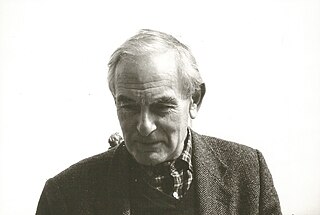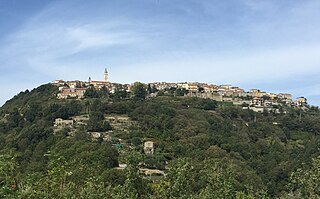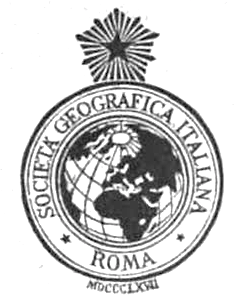
Francesco de Sanctis was a leading Italian literary critic and scholar of Italian language and literature during the 19th century.

Nicola Di Bari, born Michele Scommegna on 29 September 1940, is an Italian singer-songwriter and actor. He is considered one of the "sacred monsters" of Italian pop music.
The primary languages of Calabria are the standard Italian language as well as regional varieties of the Neapolitan and Sicilian languages, all collectively known as Calabrian. In addition, there are 100,000 Arbëresh-Albanian speakers, as well as small numbers of Calabrian Greek speakers and pockets of Occitan.

Lucos Cozza was a Roman archaeologist.

Costanzo Preve was an Italian philosopher and a political theoretician.

Gioi is a town and comune in the province of Salerno in the Campania region of south-western Italy. As of 2011 its population was of 1,339.

The Accademia di Belle Arti di Bologna is a public tertiary academy of fine art in Bologna, in Emilia-Romagna in northern Italy. It has a campus in Cesena.

Ferdinando Martini was an Italian writer and politician. He was governor of Eritrea for from late 1897 to early 1907.

Mario Tronti is an Italian philosopher and politician, considered one of the founders of the theory of operaismo in the 1960s.

Eustachio Manfredi was an Italian mathematician, astronomer and poet.

Benedetto Bonazzi was a Catholic archbishop and Italian Hellenist
Francesco Fiorentino was an Italian philosopher and historiographer.

Filippo Antonio Revelli was an Italian mathematician.
Marquise Marianna Panciatichi Ximenes d’Aragona Paulucci was an Italian malacologist who also made contributions to botany and ornithology. A specialist in non-marine molluscs, she published 32 malacological works, describing two genera and 159 species, and is commemorated in around 40 scientific names of organisms: primarily molluscs, as well as the fossil shark Scyllium pauluccii and the bird subspecies Sylvia atricapilla pauluccii.
Riccardo Astuto di Lucchese was an Italian diplomat and writer. He was born in Naples. He was the Italian colonial governor of Eritrea for five years, from 1930 to 1935.

Ferdinando Giorgetti was a composer, violinist, educator and Italian publicist.

The Società Geografica Italiana formed as a geographic society in 1867 in Florence, Italy, and moved to Rome in 1872. As of 1924 it operated from headquarters in Villa Mattei in the Celio rione. The society began publishing a journal in 1868, and also sponsored scientific expeditions, such as one to Ethiopia in 1876, led by Orazio Antinori. In 1892 its members were among the first participants of the triennial Congresso geografico italiano.
Luigi Ferdinando Casamorata was an Italian composer and music critic.

Ruffo di Calabria is one of the longest-standing noble families in Italy. It was already one of the seven most important houses of the Kingdom of Naples; their notable members include Rembrandt's patron Antonio Ruffo, the flying ace Fulco Ruffo di Calabria and his daughter Paola Ruffo di Calabria, queen-consort of Albert II of Belgium.














